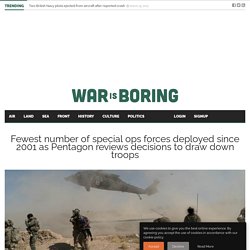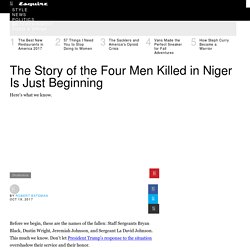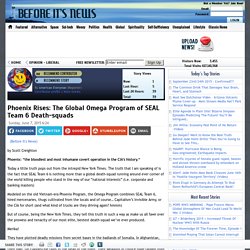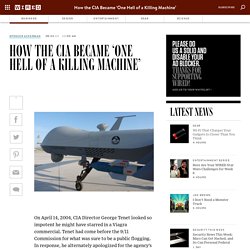

Fewest number of special ops forces deployed since 2001 as Pentagon reviews decisions to draw down troops. Corey Dickstein Stars and Stripes There are now fewer special operations forces deployed around the globe than at any point since the United States invaded Afghanistan in 2001 following the 9/11 terrorist attacks, the commander of U.S. special operations said Thursday.

Some 5,000 U.S. special operators were deployed in about 62 countries as of Thursday, Army Gen. Richard Clarke, the SOCOM commander, told the Senate Armed Services Committee. The deployment total represented about a 15% decrease in forward special operations forces compared with 2020 levels, he said. The decreasing deployment of special operations forces is representative of several recent changes. The United States had some 700 troops, mostly special operators, deployed to Somalia to aid local forces battling the al-Qaida-aligned al-Shabab terrorist network that is prominent there.
Biden has yet to say publicly whether he will remove troops by May 1. Inside The Botched Raid That Left Four US Soldiers Dead In Niger. The Story of the Four Men Killed in Niger Is Just Beginning. Before we begin, these are the names of the fallen: Staff Sergeants Bryan Black, Dustin Wright, Jeremiah Johnson, and Sergeant La David Johnson.

This much we know. Don't let President Trump's response to the situation overshadow their service and their honor. The four men died on October 6 in the country of Niger, which is just north of Nigeria, south of Algeria, and southwest of Libya. The place where they died was some 120 miles north of the capital of Niamey. All four were assigned to the 3rd Special Forces Group but serving at the time under the command of the “Unified Command” known as AFRICOM. Advertisement - Continue Reading Below Shutterstock According to a military spokesperson who spoke to me on background, there were between eight and 12 American soldiers on this particular operation, and they were moving with roughly 40-50 Nigerien soldiers.
Not only were Black, Wright, Johnson, and Johnson killed, but two other American soldiers were seriously wounded. Phoenix Rises: The Global Omega Program of SEAL Team 6 Death-squads. (Before It's News) by Scott Creighton Phoenix: “the bloodiest and most inhumane covert operation in the CIA’s history.“ Today a little truth pops out from the intrepid New York Times.

Modeled on the old Vietnam-era Phoenix Program, the Omega Program combines SEAL Team 6, hired mercenaries, thugs cultivated from the locals and of course… Capitalism’s Invisible Army, or the CIA for short (and what kind of trucks are they driving again? But of course, being the New York Times, they tell this truth in such a way as make us all fawn over the prowess and tenacity of our most elite, bestest death-squad we’ve ever produced. Merika! CIA shifts focus to killing targets. Behind a nondescript door at CIA headquarters, the agency has assembled a new counterterrorism unit whose job is to find al-Qaeda targets in Yemen.

A corresponding commotion has been underway in the Arabian Peninsula, where construction workers have been laying out a secret new runway for CIA drones. When the missiles start falling, it will mark another expansion of the paramilitary mission of the CIA. In the decade since the Sept. 11, 2001, attacks, the agency has undergone a fundamental transformation. Although the CIA continues to gather intelligence and furnish analysis on a vast array of subjects, its focus and resources are increasingly centered on the cold counterterrorism objective of finding targets to capture or kill. The shift has been gradual enough that its magnitude can be difficult to grasp. How the CIA Became ‘One Hell of a Killing Machine’ On April 14, 2004, CIA Director George Tenet looked so impotent he might have starred in a Viagra commercial.

Tenet had come before the 9/11 Commission for what was sure to be a public flogging. In response, he alternately apologized for the agency’s failure to stop 9/11 and explained it away. Finally, the exhausted panelists posed him a bottom-line question: how long would it take Tenet to get the CIA in a position to counterattack al-Qaida? “It’s going to take another five years,” Tenet confessed, “to build the clandestine service the way the human intelligence capability of this country needs to be run.” Seven years later, no one views the CIA as anything resembling impotent. 9/11 Commission Chairman Thomas Kean judged Tenet’s admission “one of the most appalling comments we heard.”
Another Ex-Commando Says He Shot Bin Laden. Former Navy SEAL Team Member Investigated for Bin Laden Disclosures. Book on Bin Laden Killing Contradicts U.S. Account. WASHINGTON — A new first-person account of the raid that killed in Pakistan last year contradicts the Obama administration’s previous descriptions of the mission, raising questions about whether the leader of Al Qaeda posed a clear threat to the commandos who fired on him.

According to the account in the book, “No Easy Day,” which will go on sale next week under the pseudonym Mark Owen, Bin Laden was shot in the head when he peered out of his bedroom door into a top-floor hallway of his compound as the SEALs rushed up a narrow stairwell toward him. The Secret History of SEAL Team 6: Quiet Killings and Blurred Lines.